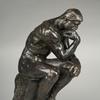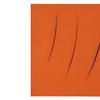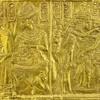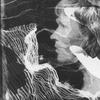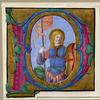Landmark Exhibition on the Watercolor Movement in American Art at Philadelphia Museum of Art
- PHILADELPHIA, Pennsylvania
- /
- February 08, 2017
The Philadelphia Museum of Art will present the most comprehensive loan exhibition in over forty years devoted to the most important chapter in the history of watercolor painting in this country. American Watercolor in the Age of Homer and Sargent (March 1-May 14, 2017) will bring together more than 170 works—many of them acknowledged masterpieces of this difficult, yet rewarding medium—drawn from public and private collections throughout the country. Tracing the development of the watercolor movement from its passionate embrace by a small, but dedicated group of painters in the 1860s to the flowering of Modernism, this sweeping survey will examine the remarkable transformation of the medium that occurred in the late nineteenth and early twentieth centuries and is centered on the achievements of two of its most influential practitioners: Winslow Homer (1836-1910) and John Singer Sargent (1856-1925).
Timothy Rub, the Museum’s George D. Widener Director and CEO, said: “This major gathering of exceptional watercolors tells an extraordinary American story in rich and compelling detail. The exhibition is also a rare event because these fragile works are light-sensitive, exhibited infrequently, and seldom lent. It will be seen only in Philadelphia, where visitors will experience one of the country’s great artistic legacies through brilliantly colored landscapes, still lifes and genre scenes, as well as illustrations and designs for ceramics and stained glass. There has never been such a comprehensive exhibition devoted to this subject, and we are exceptionally grateful to our lenders who have helped to make it possible.”
The exhibition will chronicle the growth of interest in painting with watercolor among leading American artists in the 1860s and its development into a uniquely American medium during the second half of the nineteenth century and the first several decades of the twentieth century. This survey demonstrates the extraordinary range of the works that American artists created in watercolor, from intricately detailed landscapes and genre scenes to architectural renderings and designs for ceramics and stained glass. In addition to exceptional examples by Homer and Sargent, it will examine the art of many other leading American artists such as William T. Richards, Thomas Moran, and Edwin Austin Abbey, whose reputations were greatly enhanced by the popularity of their watercolors. Also featured are works by Thomas Eakins and George Inness, who took full advantage of the popularity that the American Watercolor Society enjoyed during the last several decades of the nineteenth century.
Although it was practiced widely in the United States before the Civil War, watercolor painting existed then only at the margins of the art world. It was deemed a “ladies’” medium or a commercial vehicle, attracting little interest from the mainstream painters of this period. That changed with the founding of the American Watercolor Society in New York in 1866. It soon became a forum that united artists of all ages and styles. Drawing talent from the ranks of illustrators, and gaining strength from the “impressionists” and landscape artists who sketched in watercolor, the movement also welcomed new arts and crafts designers.
Kathleen A. Foster, the Museum’s Robert L. McNeil, Jr., Senior Curator of American Art, said: “By the early 1880s, every corner of the American art world would be represented in the Society’s galleries: avant-garde painters returning from Europe, the old guard learning new tricks, illustrators looking for “fine art” status, and women artists seeking an entrée.”
The exhibition will contain many surprises, including works by Henrietta Benson Homer, mother of Winslow Homer, who taught her son how to paint in watercolor; Flora Bond Palmer, who designed lithographs for Currier & Ives; and Fidelia Bridges, who excelled in nature study. Also included are watercolors by artists best known for decorative design, such as Louis Comfort Tiffany, represented by a rare scene of a marketplace in old Algiers, and John La Farge, whose watercolor of lushly rendered peonies is shown with his related rendition in stained glass. The exhibition will also display some of the artists’ actual watercolor sets, including those of Homer, Eakins and Sargent. A number of intimate watercolor sketchbooks will also be presented, including one by the renowned and flamboyant Boston collector Isabella Stewart Gardner.
Illustrators such as Maxfield Parrish and Jessie Willcox Smith as well as plein air masters Childe Hassam, Maurice Prendergast, and John S. Sargent further expanded upon the medium’s possibilities as the taste for watercolor extended to younger artists and eager collectors. By the 1920s, the craze for watercolor in the United States reached a point at which the influential critic Henry McBride would declare that “we are beating the world in watercolors, just now.” At that moment, a new generation, including Charles Demuth, John Marin, Charles Burchfield and Edward Hopper, would choose watercolor as a principal medium, demonstrating that within a span of some fifty years, the reputation of watercolor had been rebuilt as a powerful and versatile “American” medium.
The exhibition is organized by Kathleen A. Foster.
Publication
American Watercolor in the Age of Homer and Sargent is accompanied by a comprehensive fully-illustrated catalogue, authored by Dr. Foster, published Philadelphia Museum of Art and distributed by Yale University Press.



